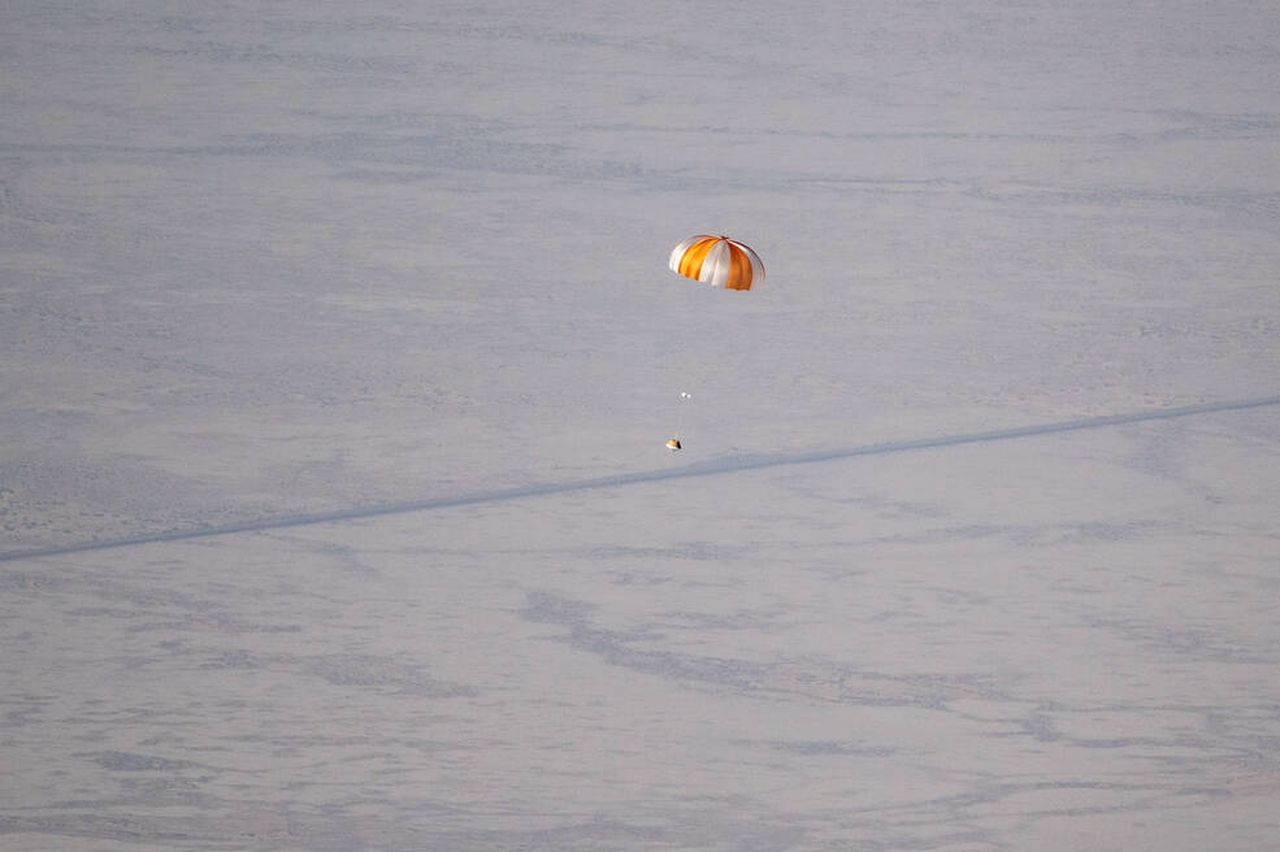Robot spacecraft âO-Rexâ makes a delivery Sunday scientists canât wait to get
OSIRIS-REx, a NASA robotic spacecraft, is set to drop off a package in the American desert Sunday collected from one of the rare asteroids that are mostly made of carbon, the element that allowed the development of life on Earth. The asteroid Bennu, holder of that carbon surface, gave scientists a scare when OSIRIS-REx almost disappeared in a sea of loose gravel, dirt and pebbles. That diversity is precisely why scientists chose Bennu – most asteroids are rock – and scientists eagerly await the sample the spacecraft is bringing home. It is expected to drop in the Arizona desert Sunday morning as OSIRIS-REx passes Earth in route to another near-Earth asteroid called Apophis for a 2029 rendevous.
Chemical engineer Solveig Irvine of NASA’s Marshall Space Flight Center in Huntsville talked to reporters Monday about the spacecraft’s journey and what scientists hope to learn. Marshall is the program lead and managed the mission for NASA serving as accountant, advocate and monitor of the mission. The Q&A has been lightly edited for space.
Q: What exactly did OSIRIS-Rex pick up and why is it so important?
IRVINE: It picked up regolith, which is surface rubble on the asteroid, which is a carbonaceous asteroid (composed mostly of carbon). Understanding the composition of Bennu is going to help us understand the microbiology here, the chemistry that was here on Earth before we had life on Earth, as well as what chemistry goes out in space, the precursors of life.
Most of the time when samples come back through the atmosphere, they’re burned up. Getting a pristine sample of what that looks like in space is really going to help us understand what else is out there and maybe where we came from. It’s just very exciting.
Q: Walk us through the mission. You faced some challenges, right?
IRVINE: It started in 2011 with an announcement of (mission) opportunity sent out by NASA so teams at the University of Arizona, Lockheed and Goddard (Space Center) came together and said we’d like to sample a C-type asteroid (including a lot of carbon). NASA awarded it and they started working. We were able to collect a sample, we don’t know how much, but a large amount.
Q: The sample are supposed to land in the Arizona desert Sunday. How can NASA manage to do that with a fly-by spacecraft?
IRVINE: The navigation team is phenomenal. We have done some adjustment maneuvers to make sure we’re lined up where we need to be. We have an (area) where we think it will land. This is a team that took a spacecraft and was able to hit dead on this point on an asteroid, so I’m pretty sure we can hit the spot in the desert, too.
Q: What are the advantages of a mission like this and how will these kinds of probes affect human spaceflight? Will we still need to go in the future?
IRVINE: I think there’s benefits to both. Human spaceflight gives us eyes on the grounds, hands on the ground, everything else. The upside to smaller robotic, autonomous spacecraft is it can scan and operate give us data all day long. It doesn’t need rest. It’s also cheaper and smaller to fly, to launch and operate. The downside is we’re limited to the instrumentation we put onboard. We can’t really deviate from that. We’d have to do software updates and things like that. Giving us human spaceflight plus robotic or other satellite spacecraft gives us the best of both worlds.
Q: What happens to the sample?
IRVINE: We’ll take it to Johnson (Space Center) curation in Texas and we store about 75 percent of that sample for future scientists with 25 percent to the Osiris Rex team. They have assembled a world class team of scientists that are going to do different analyses.
Q: Do you get attached to the little robot?
IRVINE: Oh, yes. Very much. We call him O-Rex affectionally and he’s very near and dear to our hearts. Like an extra child. You want the best for him and you’re excited to see what he’s going to do next.
